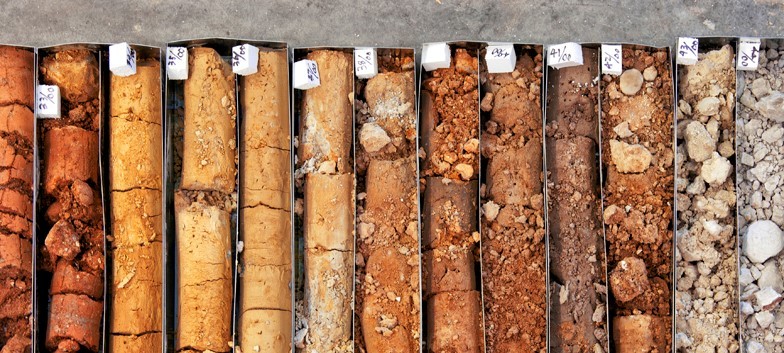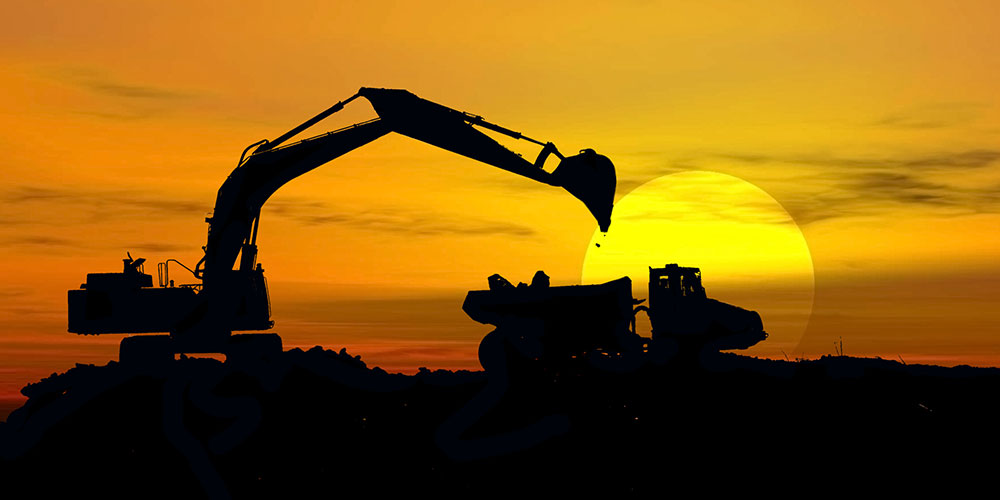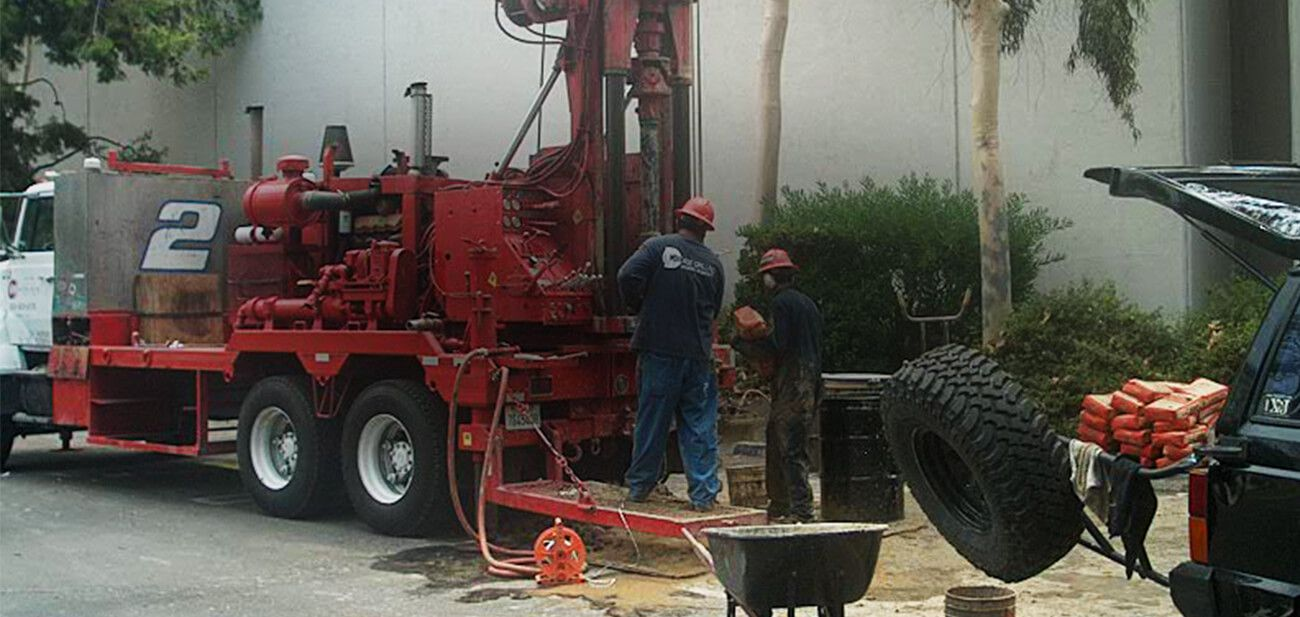Just How Geotheta is Transforming Modern Geotechnical Evaluation and Style
Wiki Article
Diving Into Geotechnical Solutions: the Important Role of Dirt Analysis, Earthquake Risk Assessment, and Geosynthetics in Structure Lasting and Safe Frameworks
In the world of building sustainable and safe frameworks, the foundation laid by geotechnical services plays an extremely important duty. Dirt evaluation, earthquake risk evaluation, and the execution of geosynthetics are important elements that make certain the integrity and longevity of buildings. By comprehending the composition of the soil, anticipating seismic dangers, and including cutting-edge products, designers can mitigate dangers and improve the durability of facilities. The connection between geotechnical solutions and the safety and security of building and constructions is detailed, forming not just the architectural strength however likewise the environmental impact of our constructed setting. The harmony in between these aspects develops the backbone of a discussion that delves right into the complex internet of aspects that add to the development of secure and lasting piles.
Significance of Dirt Analysis
Comprehending the relevance of dirt evaluation is important in ensuring the structural stability and security of any kind of building task. Dirt analysis offers essential information about the soil make-up, strength, and potential dangers that might influence the structure of a structure. By conducting complete dirt evaluation, designers can determine the appropriate foundation style, building approaches, and essential precautions to reduce any type of prospective dangers.Among the main factors soil analysis is vital is its duty in recognizing dirt homes that might influence the security of a building. Elements such as soil bearing capacity, settlement attributes, and water web content can dramatically affect the architectural performance of a construction task. Without appropriate soil analysis, the structure might be at risk of settling unevenly, resulting in structural damages and even collapse in time.
Moreover, dirt analysis aids in analyzing the danger of natural disasters such as floods, earthquakes, or landslides. By understanding the dirt's habits under various problems, engineers can apply ideal steps to boost the durability of the structure and make certain the security of occupants. geotheta. Finally, soil evaluation is an essential action in the building and construction process that should never ever be neglected
Assessing Quake Risks
Offered the important function of dirt analysis in figuring out structural security, it is crucial to additionally assess quake dangers when preparation and constructing buildings and framework. Earthquake danger analysis involves examining the potential seismic hazards that a website might face based upon its area and geological qualities. This procedure aids programmers and engineers comprehend the degree of threat positioned by quakes and help in developing frameworks that can withstand such events.Assessing earthquake dangers commonly involves examining historical seismic task in the area, identifying the site's closeness to mistake lines, and analyzing the soil composition to anticipate exactly how the ground will certainly reply to seismic waves. By performing an extensive quake risk evaluation, designers can carry out ideal reduction measures, such as incorporating seismic-resistant style features into buildings, to enhance their durability against earthquakes.

Function of Geosynthetics
Geosynthetics play a critical role in enhancing the performance and toughness of civil design frameworks. One key element of geosynthetics is their support capacity, where they can boost the toughness of dirts, providing enhanced assistance for roads, embankments, and keeping walls.They are likewise used in water drainage applications to facilitate the effective circulation of water, protecting against saturation and erosion of dirt. In enhancement to their technical functions, geosynthetics are valued for their sustainability, as they can minimize the requirement for natural resources and reduced building prices.
Structure Lasting Frameworks
The application of environmentally conscious techniques in construction is crucial for fostering the growth of sustainable structures. Structure lasting structures entails utilizing materials and layout techniques that lessen ecological impact, lower energy usage, and advertise long-term durability. Including lasting methods such as utilizing recycled products, maximizing energy effectiveness, and applying green structure certifications like LEED can dramatically enhance the ecological performance of a structure.One secret element of building lasting frameworks is the efficient use resources. This includes creating structures that make best use of natural light, ventilation, and insulation to decrease the reliance on man-made lights, home heating, and cooling down systems. In addition, integrating renewable resource sources such as solar panels or wind turbines can further decrease the carbon footprint of a building while also potentially lowering long-term energy costs.
Furthermore, sustainable structures typically focus on water conservation by incorporating features like rainwater harvesting systems, low-flow components, and drought-resistant landscape design. By taking on these eco-friendly techniques, building jobs can not only reduce their environmental influence yet additionally add to producing healthier and more resistant constructed atmospheres for future generations.
Ensuring Security in Building
In the realm of lasting building and construction methods, a fundamental concern is making certain the safety of all workers entailed in the building process. Security in building and construction encompasses different facets, consisting of the use of appropriate individual safety equipment (PPE), adherence to security methods, normal training on danger acknowledgment and reduction, and the implementation of emergency reaction plans.
Conclusion
Finally, dirt evaluation, earthquake threat assessment, and making use of geosynthetics play critical roles in making sure the sustainability and safety and security of structures. By comprehending the residential properties of soil, examining quake threats, and utilizing geosynthetics for reinforcement, engineers can develop frameworks that are both durable and long lasting. It is important for building professionals to prioritize these geotechnical services to develop safe and sustainable buildings for the future.Soil evaluation, quake threat assessment, and the implementation of geosynthetics are important elements that guarantee the stability and longevity of buildings. Soil evaluation supplies vital details concerning the soil make-up, toughness, and possible threats that might impact the structure of a framework.One of the main factors soil analysis is vital is its function in determining soil homes that might impact the security of a structure.In final thought, soil evaluation, quake risk analysis, and the use of geosynthetics play important roles in ensuring the sustainability and safety and security of frameworks. By comprehending the properties of dirt, examining earthquake threats, and making use of geosynthetics for reinforcement, designers can develop structures that are both resistant and resilient.
Report this wiki page